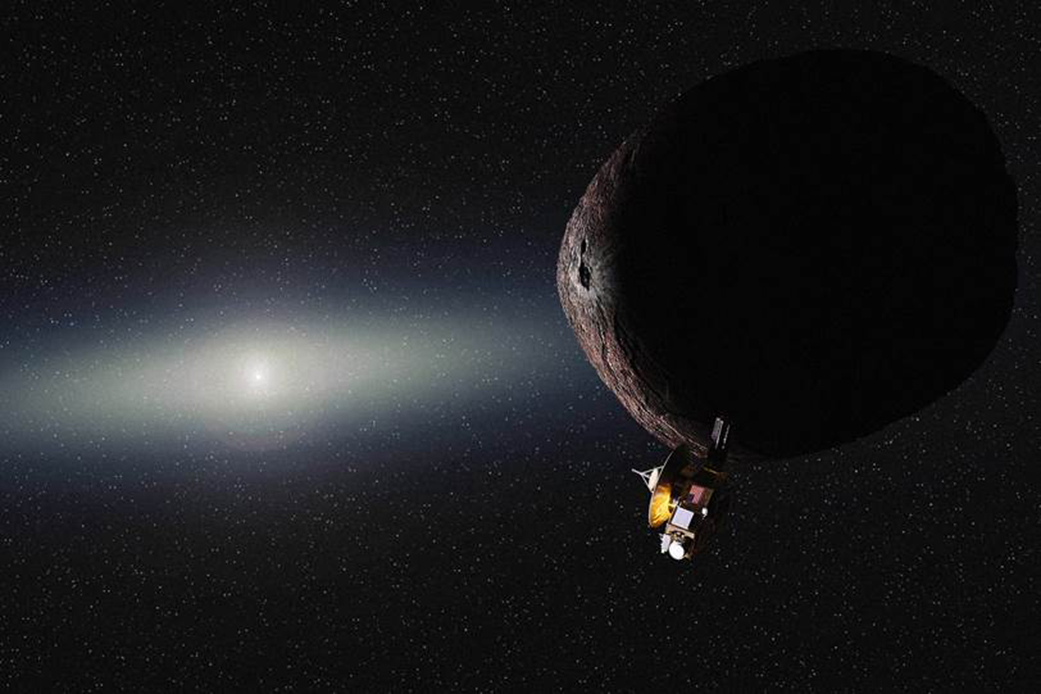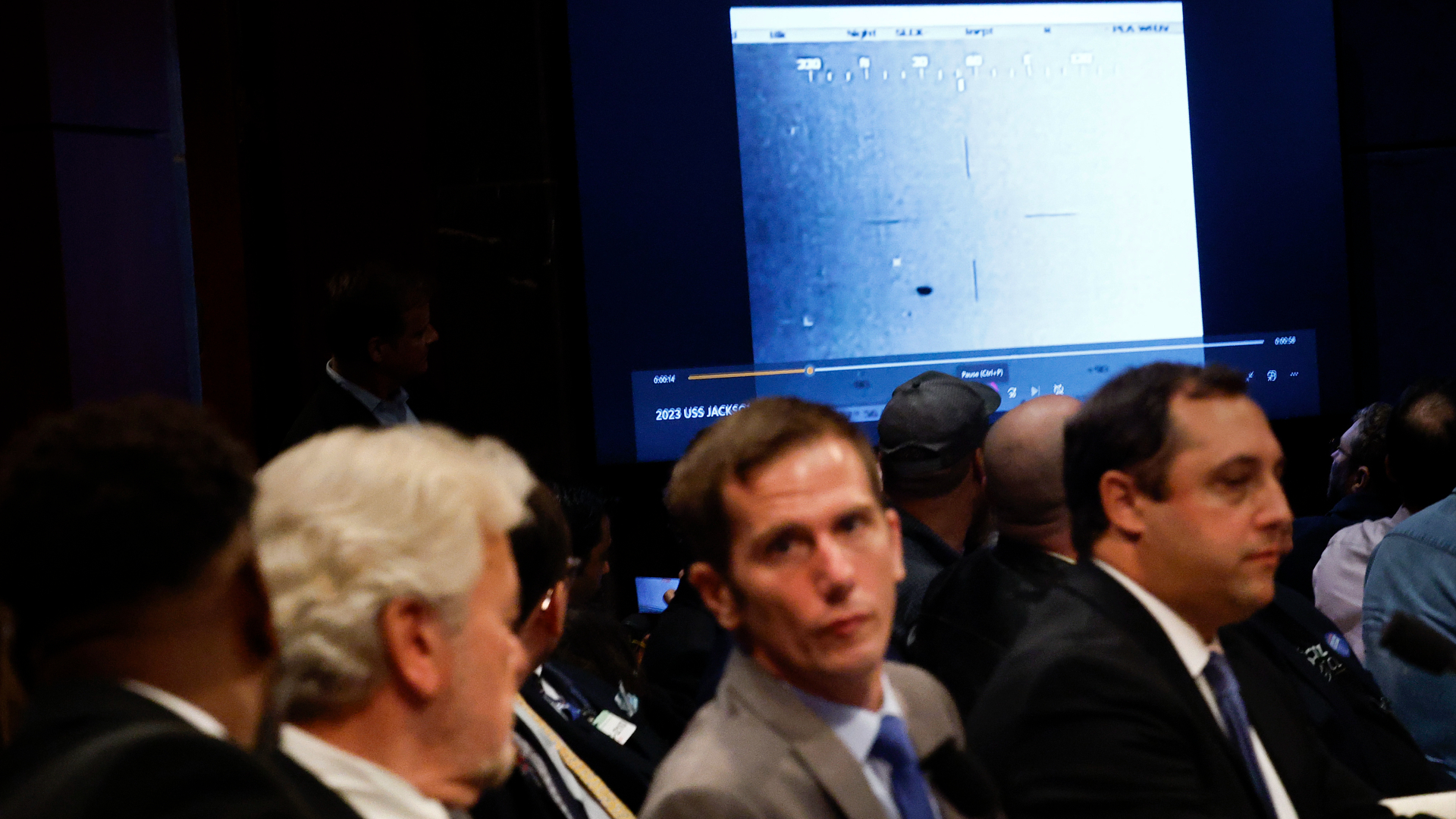Astronomers Are About to Get a Look at Pluto Probe's Next Flyby Target

The team behind NASA's New Horizons mission is about to get some good looks at the Pluto probe's next flyby target, if everything goes according to plan.
New Horizons is speeding toward a Jan. 1, 2019, close encounter with a small object called 2014 MU69, which lies about 1 billion miles (1.6 billion kilometers) beyond the orbit of Pluto.
On Saturday (June 3), 2014 MU69 will cross in front of a distant star in an "occultation" visible from a narrow band of land and sea in the Southern Hemisphere. Stellar occultations can reveal key details about the light-blocking foreground body, so New Horizons team members have deployed to Argentina and South Africa to watch the show. [Destination Pluto: NASA's New Horizons Mission in Pictures]
"Our primary objective is to determine if there are hazards near MU69 — rings, dust or even satellites — that could affect our flight planning," New Horizons principal investigator Alan Stern, of the Southwest Research Institute (SwRI) in Boulder, Colorado, said in a statement.
"But we also expect to learn more about its orbit, and possibly determine its size and shape," Stern added. "All of that will help feed our flyby planning effort."
Astronomers have not been able to nail down 2014 MU69's precise orbit yet; as its name suggests, the object was discovered just three years ago. So the New Horizons team used images of MU69 taken by NASA's Hubble Space Telescope and star-mapping data from Europe's Gaia mission to determine where MU69's shadow will fall on Earth on Saturday.
The researchers have access to more than two dozen fixed-base telescopes along this projected shadow path. And they brought along 25 portable telescopes, 22 of which are new, 16-inch (40 centimeters) instruments, mission team members said.
Breaking space news, the latest updates on rocket launches, skywatching events and more!
The team will space out the telescopes, placing one every 6 to 18 miles (10 to 29 km) along the path. This strategy will increase the chances that at least one instrument will get a good enough look at the 2-second-long occultation to help researchers determine MU69's size, reflectivity and other key characteristics, team members said. (2014 MU69 is thought to be about 25 miles, or 40 km, across.)
"Deploying on two different continents also maximizes our chances of having good weather," New Horizons deputy project scientist Cathy Olkin, also from SwRI, said in the same statement. "The shadow is predicted to go across both locations, and we want observers at both, because we wouldn't want a huge storm system to come through and cloud us out — the event is too important and too fleeting to miss."
The team will have two chances to gather similar data next month as well: 2014 MU69 will occult another star on July 10, and a different one on July 17. New Horizons scientists will observe both events. And they plan to use NASA's Stratospheric Observatory for Infrared Astronomy (SOFIA) — a 747 jet outfitted with a 100-inch (254 cm) telescope — during the July 10 occultation, mission team members said.
SOFIA will allow the team to get above any inclement weather as well as maneuver into the middle of the shadow path.
New Horizons famously flew by Pluto in July 2015, giving humanity its first-ever up-close looks at that diverse and complex world. The mission team was able to start mapping out the Pluto encounter nearly seven years ahead of time, researchers said. The timeline is more compressed with 2014 MU69, because New Horizons' handlers couldn't begin focusing on this second target until Pluto was in the probe's rearview mirror.
"Spacecraft flybys are unforgiving," Stern said. "There are no second chances. The upcoming occultations are valuable opportunities to learn something about MU69 before our encounter, and help us plan for a very unique flyby of a scientifically important relic of the solar system's era of formation."
Follow Mike Wall on Twitter @michaeldwall and Google+. Follow us @Spacedotcom, Facebook or Google+. Originally published on Space.com.

Michael Wall is a Senior Space Writer with Space.com and joined the team in 2010. He primarily covers exoplanets, spaceflight and military space, but has been known to dabble in the space art beat. His book about the search for alien life, "Out There," was published on Nov. 13, 2018. Before becoming a science writer, Michael worked as a herpetologist and wildlife biologist. He has a Ph.D. in evolutionary biology from the University of Sydney, Australia, a bachelor's degree from the University of Arizona, and a graduate certificate in science writing from the University of California, Santa Cruz. To find out what his latest project is, you can follow Michael on Twitter.


